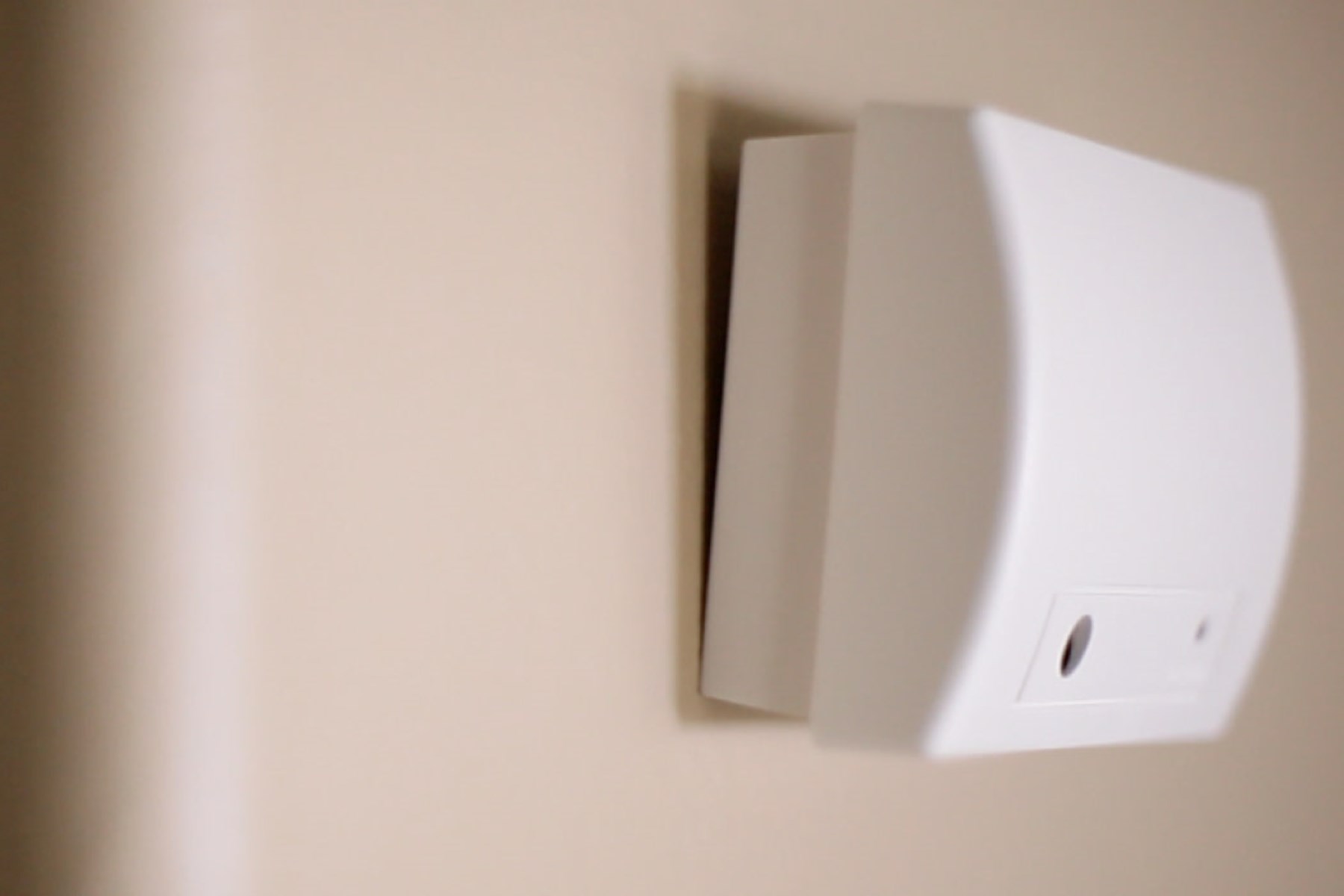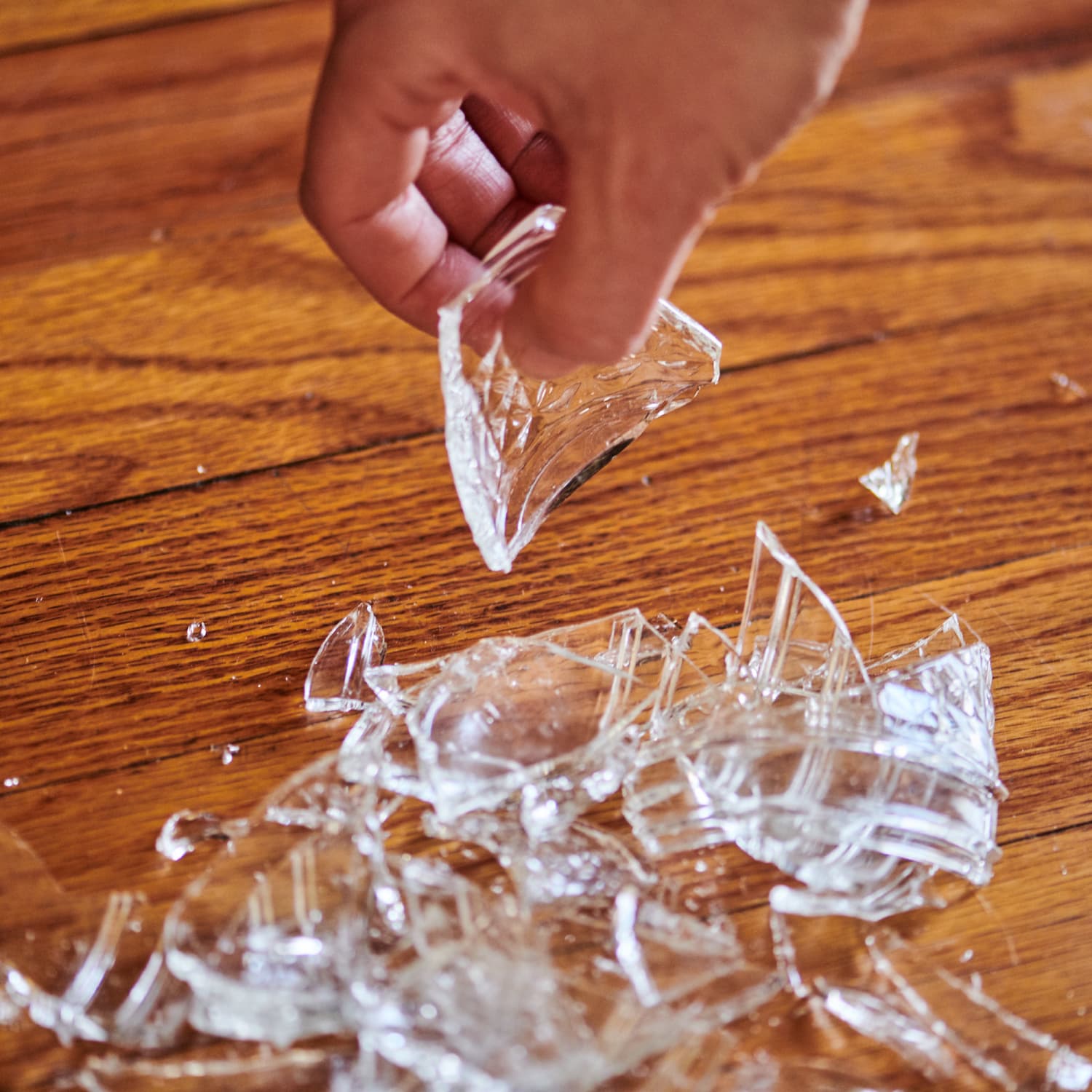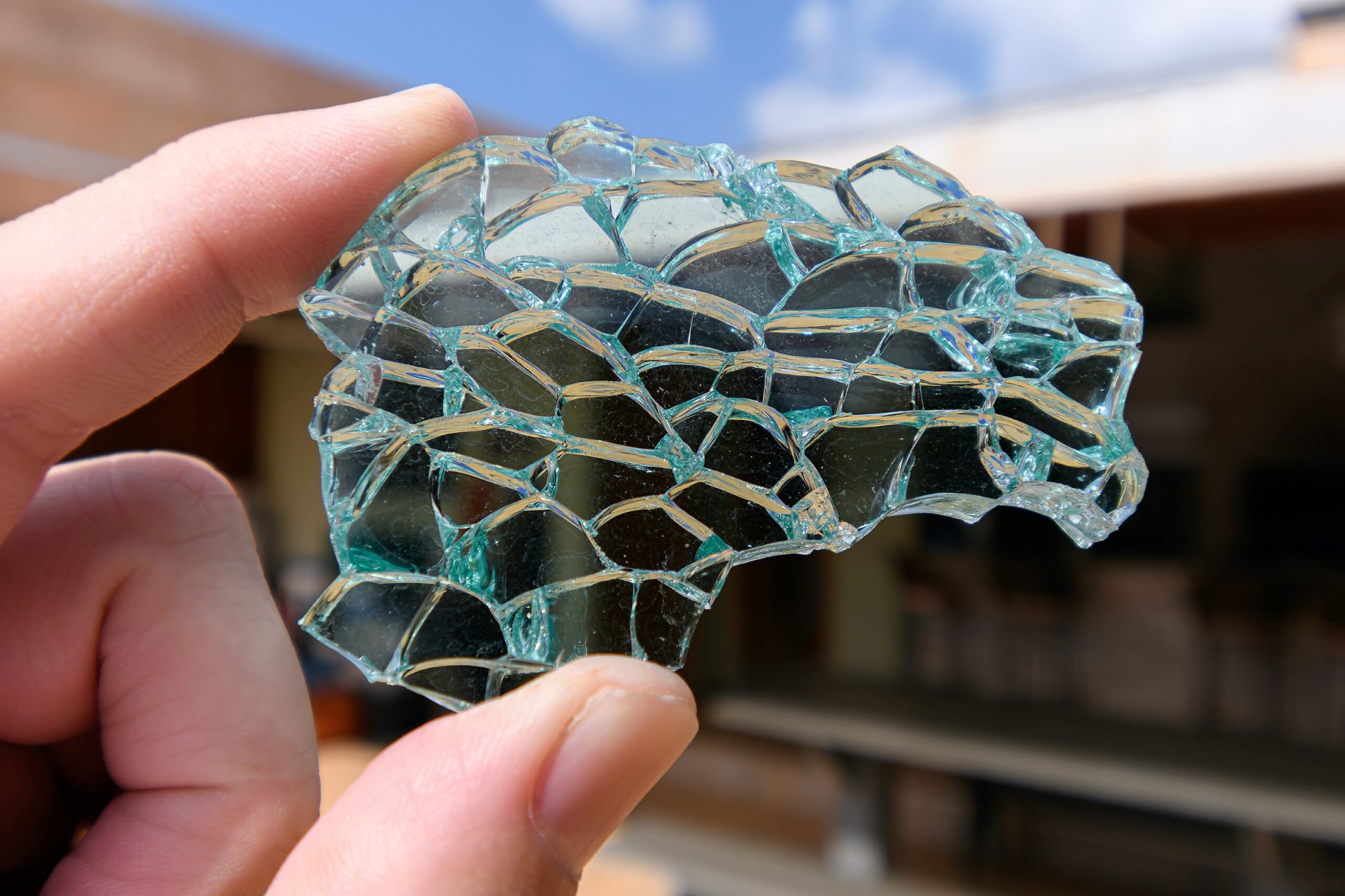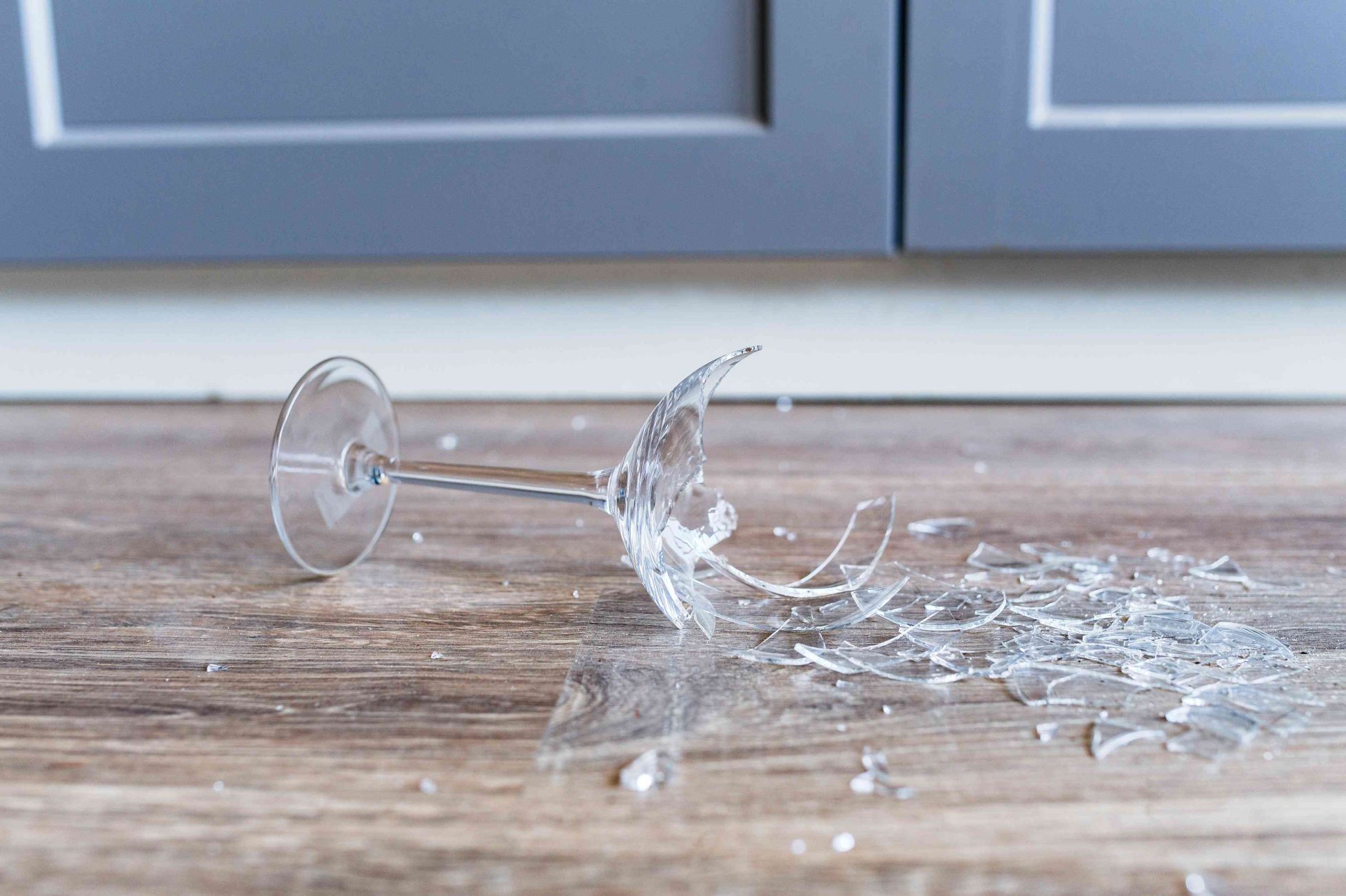Home>Furniture & Design>Interior Design Trends>How To Break A Glass With Your Voice


Interior Design Trends
How To Break A Glass With Your Voice
Modified: October 20, 2024
Learn how to break a glass with your voice and discover the latest interior design trends. Master the art of sound and stay updated on interior design styles.
(Many of the links in this article redirect to a specific reviewed product. Your purchase of these products through affiliate links helps to generate commission for Storables.com, at no extra cost. Learn more)
Introduction
Breaking a glass with the power of your voice may seem like a feat reserved for superheroes or mythical figures, but it's a real phenomenon that has fascinated people for centuries. The ability to shatter glass through sound alone has captivated the human imagination, leading to numerous myths and legends. From opera singers to scientific experiments, the concept of using sound to break glass has intrigued and mystified both experts and enthusiasts alike.
In this comprehensive guide, we will delve into the intriguing world of breaking glass with your voice. We will explore the science behind this extraordinary phenomenon, uncover the techniques required to achieve such a feat, and discuss the safety precautions necessary to prevent any mishaps. Whether you're an aspiring vocal artist, a curious science enthusiast, or simply someone intrigued by the extraordinary capabilities of the human voice, this article will provide valuable insights into the art and science of glass-breaking with sound.
Prepare to embark on a journey that combines the realms of physics, music, and vocal prowess. By the end of this guide, you will gain a deeper understanding of the intricate processes involved in harnessing the power of sound to achieve a seemingly impossible task. So, let's unravel the mysteries and unveil the secrets behind the mesmerizing art of breaking glass with nothing but the sheer force of your voice.
Key Takeaways:
- Unveil the Science: Breaking glass with your voice is about matching the glass’s natural frequency with sound waves, showcasing the fascinating interplay of physics and vocal control.
- Safety First: Prioritize safety with protective gear, controlled environments, professional supervision, audience distance, and emergency preparedness when attempting glass-breaking with your voice.
Read more: How To Break Thick Glass
Understanding the Science Behind Breaking Glass with Your Voice
The concept of breaking glass with sound may appear to be shrouded in mystery and wonder, but at its core, it is rooted in the fundamental principles of physics and acoustics. To comprehend this extraordinary phenomenon, it's essential to delve into the intricate science that underpins the ability to shatter glass using the power of the human voice.
When a glass object is struck or exposed to a force, it vibrates at a specific frequency. Every physical object, including glass, has a natural frequency at which it vibrates when disturbed. This natural frequency is determined by the object's size, shape, and material composition. When an external force, such as sound waves, matches this natural frequency, it can lead to a phenomenon known as resonance.
Resonance occurs when an object is subjected to a vibrating force at its natural frequency, causing it to absorb energy and vibrate at an increased amplitude. In the case of glass, when exposed to sound waves at its natural frequency, the vibrations intensify, leading to stress within the glass structure. If the force of the sound waves is sufficiently strong and sustained, it can exceed the glass's structural integrity, causing it to fracture and ultimately shatter.
The key to breaking glass with sound lies in identifying and producing the precise frequency that resonates with the glass object. This requires a deep understanding of the resonant frequency of the specific glass material being targeted. Additionally, the amplitude and duration of the sound waves play a crucial role in determining the effectiveness of the attempt.
Furthermore, the human voice, with its wide range of frequencies and varying amplitudes, can be harnessed to produce the specific sound waves required to induce resonance in a glass object. This process involves meticulous control over vocal pitch, intensity, and sustained projection to generate the desired effect.
In essence, breaking glass with sound is a remarkable demonstration of the principles of resonance and the interaction between sound waves and physical objects. By harnessing the power of acoustics and understanding the natural frequencies of glass, it becomes possible to achieve the seemingly extraordinary feat of shattering glass with nothing but the force of the human voice.
Developing the Technique
Developing the technique to break glass with your voice requires a combination of precision, control, and understanding of the fundamental principles of acoustics. It is a skill that demands patience, practice, and a deep connection with your vocal abilities. Here's a detailed exploration of the essential steps involved in honing the technique to achieve this extraordinary feat.
Mastering Vocal Control
The foundation of glass-breaking with sound lies in mastering vocal control. This involves developing the ability to produce sustained, powerful sound waves at specific frequencies. Vocal exercises aimed at strengthening the diaphragm, controlling airflow, and refining pitch accuracy are crucial in this process. By honing your vocal control, you can gradually increase the intensity and precision of the sound waves emitted, laying the groundwork for glass-breaking proficiency.
Understanding Resonant Frequencies
Central to the technique is the understanding of resonant frequencies and their impact on glass objects. Different glass materials have distinct resonant frequencies, and identifying these frequencies is essential for a successful attempt. Through experimentation and observation, you can gain insight into the specific frequencies that induce resonance in various types of glass. This knowledge forms the basis for tailoring your vocal output to match the resonant frequency of the targeted glass object.
Read more: How To Break Glass Cleanly
Refining Pitch and Intensity
Achieving the precise pitch and intensity required to induce resonance in glass demands meticulous refinement of vocal techniques. By experimenting with different vocal registers and intensities, you can identify the optimal combination that elicits the desired effect. This process involves continuous fine-tuning of your vocal delivery, allowing you to produce sound waves with the ideal frequency and amplitude to resonate with the glass and gradually build up stress within its structure.
Practice and Patience
Developing the technique to break glass with your voice is a journey that necessitates dedicated practice and unwavering patience. Consistent vocal exercises, focused experimentation, and persistent refinement of vocal techniques are essential components of this process. Through regular practice, you can gradually enhance your vocal prowess, refine your control over pitch and intensity, and cultivate the ability to sustain the required sound waves for extended durations.
Integration of Physics and Artistry
The technique's development involves a harmonious integration of physics and artistry. It requires a deep appreciation for the scientific principles governing resonance and the creative finesse of harnessing the human voice as a powerful instrument. By merging scientific understanding with artistic expression, you can elevate the technique to a form of sonic artistry, where the manipulation of sound waves becomes a mesmerizing display of skill and control.
In essence, developing the technique to break glass with your voice is a multifaceted endeavor that encompasses vocal mastery, scientific understanding, and artistic finesse. Through dedicated practice, a profound understanding of resonant frequencies, and a relentless pursuit of vocal refinement, you can embark on a transformative journey toward mastering this extraordinary feat.
Preparing Your Voice
Preparing your voice for the task of breaking glass is a critical aspect of mastering this extraordinary feat. It involves a comprehensive approach to vocal readiness, encompassing physical conditioning, vocal warm-ups, and mental focus. By meticulously preparing your voice, you can optimize its potential to generate the precise sound waves required to induce resonance in a glass object.
Read more: How To Safely Break Glass
Physical Conditioning
Physical conditioning forms the foundation for vocal preparedness. Engaging in regular physical exercise, particularly activities that enhance cardiovascular health and lung capacity, can significantly benefit your vocal performance. Aerobic exercises, such as running, swimming, or cycling, help improve overall respiratory function, enabling you to sustain powerful vocal projection for extended periods. Additionally, maintaining good posture and practicing relaxation techniques can alleviate tension in the body, promoting optimal vocal production.
Vocal Warm-Ups
Prior to attempting to break glass with your voice, thorough vocal warm-ups are essential. These exercises serve to limber up the vocal cords, expand the vocal range, and promote vocal agility. Beginning with gentle humming, lip trills, and sirening exercises can gradually awaken the vocal mechanism, preparing it for the demands of producing sustained, resonant sound waves. As the warm-up progresses, incorporating scales, arpeggios, and vowel articulation exercises can further refine vocal control and precision.
Mental Focus
Preparing your voice extends beyond physical and vocal conditioning; it also encompasses mental focus and concentration. Cultivating a calm and focused mindset is crucial for harnessing the full potential of your voice. Engaging in mindfulness practices, deep breathing exercises, or visualization techniques can help center your mental state and channel your focus toward the task at hand. By fostering a clear and focused mindset, you can enhance your ability to project sound waves with unwavering intensity and precision.
Hydration and Rest
Maintaining optimal vocal health involves adequate hydration and rest. Staying well-hydrated by consuming ample water supports vocal cord lubrication and overall vocal function. Additionally, ensuring sufficient rest and vocal rest periods is vital for vocal recovery and resilience. Adequate sleep and vocal rest enable the vocal cords to recuperate, minimizing the risk of strain or fatigue during vocal performances.
Read more: How To Break Bulletproof Glass
Vocal Exploration
Exploring the nuances of your vocal capabilities is an integral part of voice preparation. Experimenting with different vocal registers, timbres, and resonances allows you to familiarize yourself with the diverse sonic possibilities of your voice. This exploration not only enhances vocal versatility but also provides valuable insights into the tonal qualities that can be harnessed to create the specific sound waves required for glass-breaking.
In essence, preparing your voice for the extraordinary task of breaking glass involves a holistic approach that encompasses physical conditioning, vocal warm-ups, mental focus, hydration, rest, and vocal exploration. By diligently attending to each aspect of vocal readiness, you can cultivate a voice that is primed for the remarkable endeavor of harnessing the power of sound to shatter glass.
Finding the Right Pitch and Frequency
Finding the right pitch and frequency is a pivotal aspect of mastering the art of breaking glass with your voice. It involves a meticulous exploration of the sonic landscape, where the interplay of pitch, frequency, and resonance holds the key to unlocking the potential for glass-shattering sound waves.
The process of identifying the optimal pitch and frequency begins with a deep understanding of the resonant properties of glass. Different types of glass materials possess distinct resonant frequencies, which are influenced by factors such as thickness, shape, and composition. By conducting systematic experiments and observations, one can discern the specific frequencies that induce resonance in various glass objects. This empirical approach provides invaluable insights into the resonant characteristics of different glass materials, laying the groundwork for tailoring vocal output to match these frequencies.
Central to the quest for the right pitch and frequency is the exploration of vocal range and timbre. The human voice encompasses a diverse spectrum of pitches, from the rich depths of the chest voice to the soaring heights of the head voice. By delving into vocal exercises and explorations across this range, individuals can pinpoint the pitches that exhibit the greatest potential for inducing resonance in glass. Additionally, experimenting with variations in vocal timbre, such as bright, focused tones or darker, more resonant qualities, allows for a nuanced understanding of how different vocal textures interact with glass surfaces.
Furthermore, the pursuit of the ideal frequency involves meticulous refinement of vocal techniques. By modulating the intensity and duration of vocal projection, individuals can fine-tune the amplitude of sound waves to align with the resonant frequencies of glass. This process demands a keen ear for discerning subtle variations in pitch and frequency, as well as a discerning sense of control over vocal delivery.
Moreover, technological aids, such as frequency analyzers and spectrograms, can provide valuable visual and numerical feedback on the frequencies produced during vocalization. By leveraging these tools, individuals can gain precise insights into the frequencies generated by their voice, facilitating the identification of the optimal pitch and frequency for glass-breaking endeavors.
In essence, finding the right pitch and frequency for breaking glass with your voice is a multifaceted exploration that intertwines scientific understanding, vocal artistry, and empirical observation. By delving into the sonic intricacies of the human voice and its interaction with glass, individuals can embark on a transformative journey toward harnessing the power of sound to achieve the extraordinary feat of glass-shattering resonance.
Safety Precautions
Ensuring safety is paramount when attempting to break glass with your voice. This extraordinary feat, while captivating, requires careful consideration of potential risks and the implementation of essential safety precautions. By prioritizing safety measures, individuals can mitigate hazards and safeguard against potential mishaps, fostering a secure environment for the exploration of this remarkable endeavor.
Protective Gear
Wearing appropriate protective gear is a fundamental safety measure when engaging in glass-breaking attempts. Safety goggles or protective eyewear serve as a crucial barrier against airborne glass particles in the event of breakage. By shielding the eyes from potential debris, protective gear minimizes the risk of eye injuries, ensuring the safety and well-being of the performer.
Read more: How To Break Glass Quietly
Controlled Environment
Conducting glass-breaking experiments in a controlled environment is essential for mitigating risks and ensuring the safety of all participants. Selecting a designated area free from obstacles and hazards, such as sharp objects or slippery surfaces, provides a secure setting for the endeavor. Additionally, securing the surrounding space and restricting access to unauthorized individuals contribute to a safe and controlled environment for the glass-breaking demonstration.
Professional Supervision
Seeking professional supervision from individuals experienced in glass-breaking techniques and safety protocols is highly advisable, particularly for those new to the practice. Supervisors with expertise in acoustics, glass properties, and safety standards can offer valuable guidance, ensuring that the glass-breaking attempts are conducted with precision and adherence to safety measures. Their oversight can help prevent potential accidents and provide essential support throughout the process.
Audience Distance
Maintaining a safe distance between the performer and the audience is imperative to safeguard against potential hazards. Establishing a designated viewing area at a safe distance from the glass-breaking site minimizes the risk of audience members being exposed to airborne glass particles in the event of breakage. Clear communication and demarcation of the viewing space contribute to a secure and controlled environment for spectators.
Emergency Response Preparedness
Preparation for emergency scenarios is a critical aspect of safety precautions. Having a well-defined emergency response plan, including access to first-aid supplies and knowledge of emergency procedures, ensures readiness to address unforeseen incidents. Additionally, designating individuals trained in first aid and emergency response enhances the overall safety framework, providing a prompt and effective response in the event of an emergency.
In essence, prioritizing safety precautions is integral to the responsible pursuit of breaking glass with your voice. By embracing protective gear, a controlled environment, professional supervision, audience distance management, and emergency response preparedness, individuals can embark on this extraordinary endeavor with a steadfast commitment to safety and well-being. These precautions not only mitigate potential risks but also foster an environment where the art and science of glass-breaking can be explored with confidence and security.
Read more: How To Break Into A Sliding Glass Door
Conclusion
The art of breaking glass with the power of the human voice is a captivating fusion of science, artistry, and human potential. Throughout this comprehensive guide, we have delved into the intricate realms of acoustics, vocal mastery, and safety considerations, unraveling the secrets behind this extraordinary feat. From understanding the resonant properties of glass to refining vocal techniques and prioritizing safety measures, the journey toward mastering glass-breaking with sound is a testament to the remarkable capabilities of the human voice.
At its core, the ability to shatter glass through sound alone is a testament to the profound interplay between physics and artistic expression. It embodies the harmonious convergence of scientific principles and vocal finesse, where the manipulation of sound waves becomes a mesmerizing display of skill and control. The pursuit of the right pitch and frequency, the meticulous preparation of the voice, and the implementation of safety precautions collectively underscore the multifaceted nature of this remarkable endeavor.
Moreover, the exploration of breaking glass with sound transcends mere spectacle; it serves as a testament to the boundless potential of human creativity and ingenuity. It exemplifies the relentless pursuit of pushing the boundaries of what is deemed possible, inviting individuals to embark on a transformative journey that intertwines scientific inquiry with artistic exploration.
As we conclude this exploration, it is essential to underscore the significance of responsible practice and unwavering dedication in the pursuit of glass-breaking with sound. The mastery of this extraordinary feat demands patience, persistence, and a deep reverence for the art and science of acoustics. It is a testament to the human capacity for innovation and the unyielding pursuit of excellence.
In essence, the art of breaking glass with your voice stands as a testament to the remarkable potential inherent in the human voice and the captivating intersection of science and art. It invites individuals to embark on a journey of discovery, where the boundaries of vocal prowess and scientific understanding are continually pushed, leading to a profound appreciation for the extraordinary capabilities of the human voice.
Frequently Asked Questions about How To Break A Glass With Your Voice
Was this page helpful?
At Storables.com, we guarantee accurate and reliable information. Our content, validated by Expert Board Contributors, is crafted following stringent Editorial Policies. We're committed to providing you with well-researched, expert-backed insights for all your informational needs.











0 thoughts on “How To Break A Glass With Your Voice”